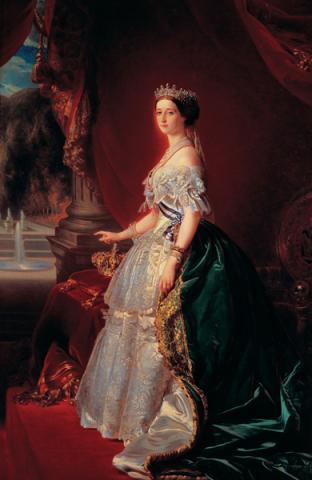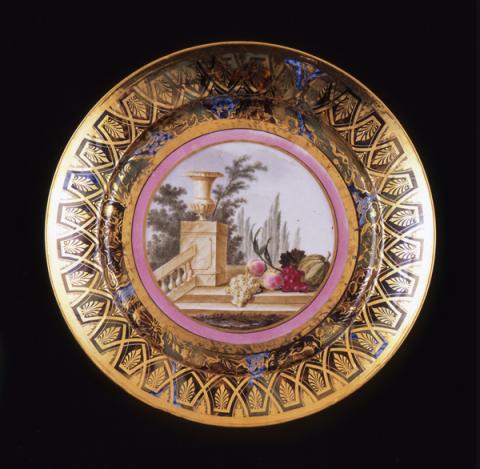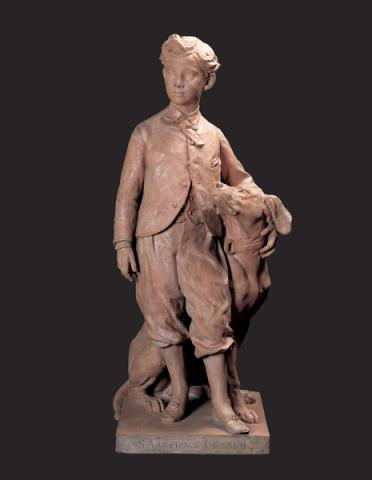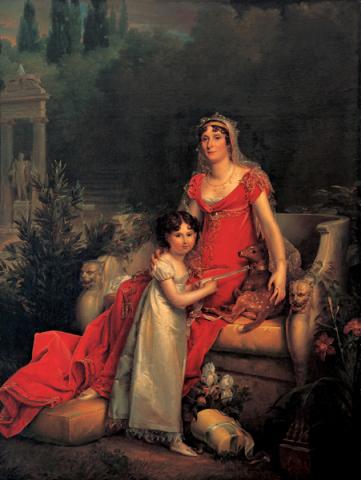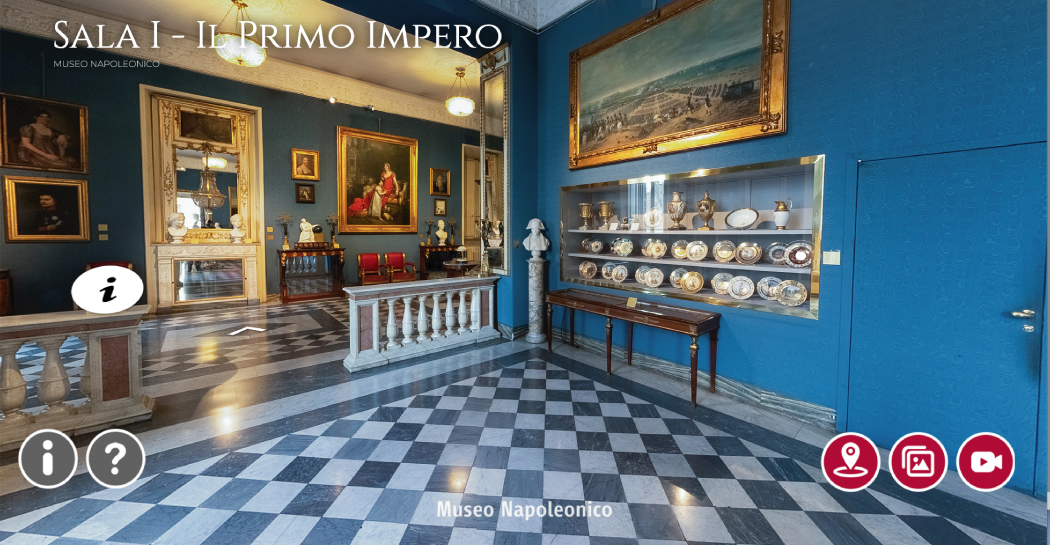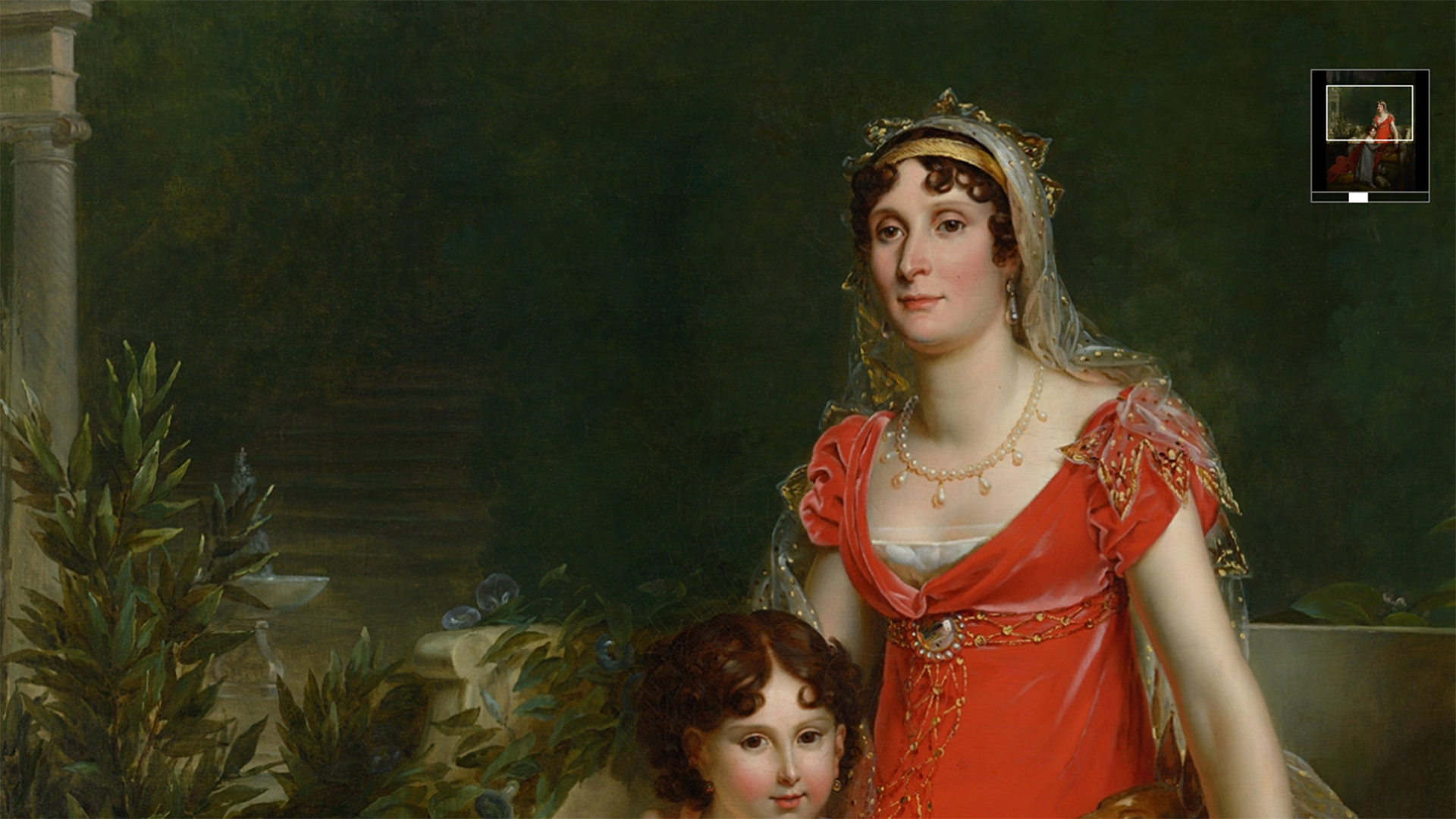Napoleon and the Palazzo del Quirinale
However, this brief excursus into the residences of the Bonapartes in Rome cannot be finished without mention of the Palazzo del Quirinale, chosen to be the second royal palace and to accommodate the Emperor of France, his wife Marie Louise and their son, who had received the symbolic title of the King of Rome; this symbolic choice, which was probably suggested by the architect Raffaele Stern, lead to the need to undertake major works to make the palace fit for the needs of the imperial couple for the occasion fo their planned visit to Rome in 1812, which, however, never took place because of the disastrous campaign in Russia. The overseer of the enterprise was the architect Raffaele Stern who, together with Daru, the Superintendent of Crown Assets, chose artists and decorators with the breadth of vision possible in the cosmopolitan Roman artistic environment, while the iconographic programme was placed under the supervision of Canova, Denon and Stern, appointments approved by Napoleon himself.
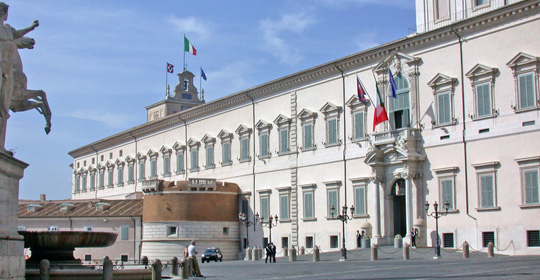
The guiding idea was to compare the Napoleonic Empire with the Roman, evoking the imperial splendour, the justice of Trajan, the defenders of Rome and the protecting spirits of war and peace, thus praising Napoleon’s glory by modelling his deeds on the great heroes of the past. From another point of view, the possession of Rome, the place par excellence of historical memory, represented, in Bonaparte’s political vision, the value of continuity and the legitimation of imperial power. Unfortunately the Napoleonic apartments – one for receiving delegations, one for the emperor, in the north-west of Gregorio XIII’s old lodge, one for the empress in the area constructed for Sextus V around the fountain – only retain some of the decorations and furnishings created specially for them. However the ceilings painted with impetuous inspiration by Felice Giani and the frieze by Thorwaldsen showing the histories of Alexander the Great, which are among the greatest examples of the neo-classical style in Rome, give enough evidence to guess at the original grandeur and elegance.
Anyone, indeed, who wants to trace through the thread of family memories the intense and meaningful relationship between Rome and the Bonapartes must visit the Napoleonic Museum, donated to the City of Rome by Count Giuseppe Primoli, a direct descendant on his mother’s side, of the “Roman” Bonapartes, whose founder was Lucien Bonaparte.»


























